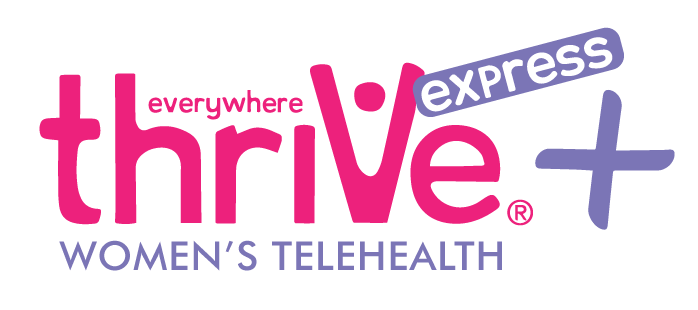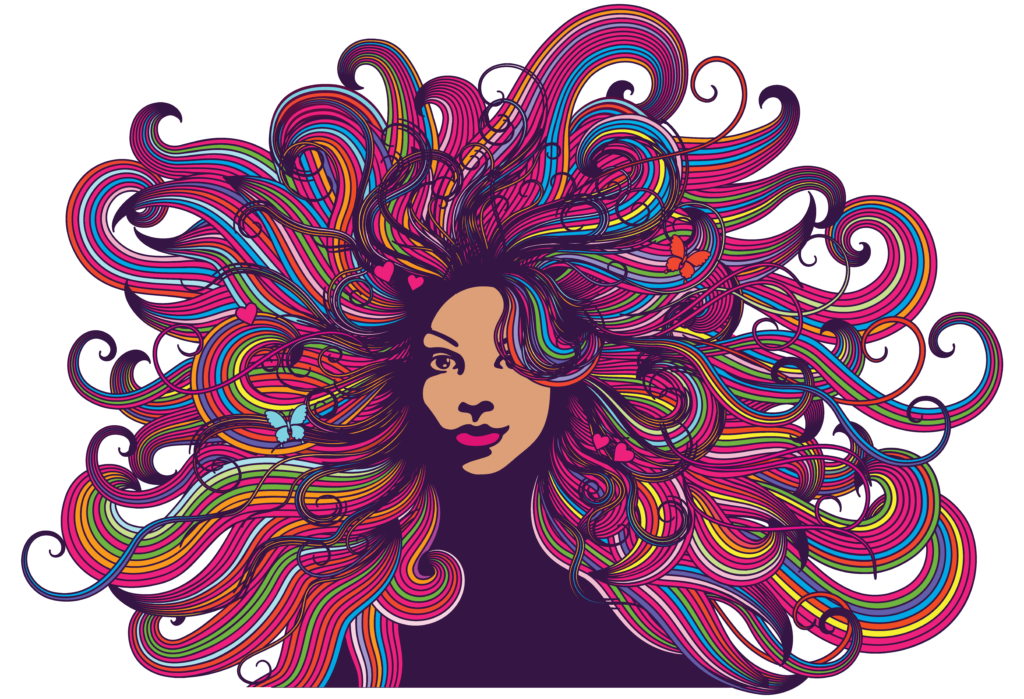Wondering how to get rid of cramps? Ugh, I totally get you. Women’s cycles are miraculous and beautiful, don’t get me wrong. But I think we’d all agree on one thing: cramping sucks. Since adolescence, most of us women learn to manage varying levels of pain during our periods (on top of finding manageable ways to handle the flow, hormonal changes, mood swings, and more).
But we’re tough. We find our people. And we thrive.
Speaking of thriving, have you heard of ThriVe+? Here at ThriVe+, we’re all about women’s health. Here on our blog we’re always down to chat about women’s sexual health, cycles, abortion, and pregnancy. It’s a safe space to ask questions.
But today, I want to talk to you about something that we’ve all probably thought about at some point: how to get rid of cramps. These cramps actually have a medical name! The condition is called dysmenorrhea, and can be really painful.1 These cramps often affect our daily lives. But understanding why they happen and what we can do about them can actually make a big difference. How? Let’s talk.
Why do we get menstrual cramps?
Menstrual cramps happen because of the contractions of the muscles in your uterus. These contractions help the uterus shed its lining each month, leading to what we know as a period.1 Sometimes, these contractions can be really strong and painful. I get it, they are NO fun. But it’s a natural part of women’s cycles.
Sometimes though, the pain isn’t normal or healthy. Wondering how to get rid of cramps? Well, the first step is finding out why you’re having them. Read about the conditions below. If you’re experiencing heavy bleeding and a lot of pain, you should talk to your doctor. You can get help.
What causes more pain during a period?
1. Endometriosis: This is a condition where the tissue that normally lines the inside of the uterus starts to grow outside of it. This can cause severe pain and heavy periods.
2. Uterine Fibroids: These are non-cancerous growths in the uterus. They can cause heavy bleeding and pain during periods.
3. Pelvic Inflammatory Disease (PID): PID is an infection of the reproductive organs. It’s often caused by sexually transmitted diseases (STDs). This is why regular STD testing is important. If you are sexually active, or have been in the past, you should get tested to prevent PID and other complications. Your health is really important. Please take care of yourself.1

How can I make my period cramps better?
You’re wondering how to get rid of cramps. Totally valid. While it might not be possible to totally make them go away, there are definitely things you can do to make the pain less intense. They’re simple, but make sure you ask your doctor before starting any new medicines or supplements.
1. Heat application: Using a heating pad or hot water bottle on your lower abdomen can help relax your muscles and reduce cramps.2
2. Over-the-counter painkillers: Medications like ibuprofen (Advil) or naproxen (Aleve) can be very effective at relieving menstrual pain.1 If you have questions about painkillers, please talk to your doctor or pharmacist about it. They’re experts, and can give you recommendations about how to get rid of cramps.
3. Dietary supplements: Some people find relief with supplements like magnesium, vitamin B1, or vitamin B6.2
Lifestyle tweaks to help your period feel better
1. Regular exercise: Activities like walking, swimming, or yoga can help reduce the severity of cramps over time. You might not feel like doing these because you’re in pain, but light exercise can actually help quite a bit. Don’t overdo it, though. Make sure you’re getting rest, too.2
2. Stress management: Practices like meditation, deep breathing, or spending time on hobbies can help you manage stress. Lowering your stress can help with menstrual pain. It’s all related. Isn’t the female body amazing?2
Get to know your body
Understanding your body and your menstrual cycle is really important. When you’re looking into how to get rid of cramps, start by taking notes of your symptoms. Rate your pain on a scale of 1 to 10 during your cycle, and note when the pain and bleeding occurs. This way, you’ll have some good info to give your doctor.
Don’t be afraid to speak up about your symptoms. Find a doctor or OBGYN who is passionate about women’s health. If they’re a good provider, they’ll listen to your concerns. When you’re trying to figure out how to get rid of cramps, you should find a doctor that specializes in women’s health. If you feel like your doctor is dismissing your symptoms, you might want to get a second opinion. You’re allowed to shop around for a doctor that respects you. You deserve to be taken seriously and to receive the best care possible.

Commonly asked questions about menstrual cramps
1. Why do some people have worse cramps than others?
Cramps can vary greatly from person to person. That’s due to different factors like hormone levels and the presence of conditions such as endometriosis or uterine fibroids.1 Some women may naturally experience stronger uterine contractions, leading to more intense cramps.
2. Can menstrual cramps be a sign of something serious?
While cramps are often a normal part of your cycle, very severe or persistent pain is not. It can sometimes indicate underlying health issues like endometriosis, uterine fibroids, or pelvic inflammatory disease.1 Wondering how to get rid of cramps? If your cramps are interfering with your daily life, it’s important to talk to a doctor.
3. Is it normal to have cramps after my period ends?
Mild cramping in the weeks after your period could be ovulation pain3 or (if you’ve been sexually active) maybe even an early pregnancy sign.4 If you think you might be pregnant, come see us at ThriVe+ for a no-cost, lab-quality pregnancy test.
If you experience severe pain after your period, it’s a good idea to see a doctor to rule out any other conditions.
4. Can diet affect menstrual cramps?
While it might not specifically stop menstrual cramps, what you eat can help you feel better overall (and not just while you’re on your period!). Choosing a balanced diet rich in fruits, vegetables, whole grains, and lean proteins can help reduce bloating and discomfort.5 . You might also try limiting your intake of salt, caffeine, and alcohol.5 You deserve to feel as comfortable as possible; your diet is just a part of taking care of yourself.
5. Are there long-term solutions for reducing menstrual cramps and feeling better during your period?
Definitely! Cramps that aren’t caused by other conditions (like endometriosis) often lessen naturally as you get older and after childbirth.6 If your cramps are caused by a condition like fibroids or endometriosis, your doctor might recommend surgery to correct the problem.1 Other long-term solutions to feel better during your cycle can include lifestyle changes like regular exercise, stress management techniques, getting enough rest, and a healthy diet.5 If you’re wondering how to get rid of cramps, these are natural ways that also benefit your overall health. It’s best to discuss your cycle and your lifestyle with a healthcare provider to find the most suitable approach for you.
By learning about menstrual cramps, their causes, and how to manage them, you can take control of your health and wellness. You’re not alone. There are tons of women just like you, who are equipping themselves with knowledge. You deserve to feel confident in your health. Don’t hesitate to get help and find a supportive healthcare provider who respects you.
Sources:






